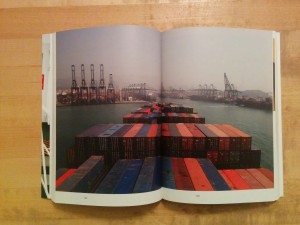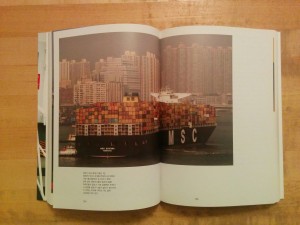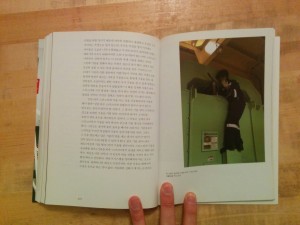Back in June 2015, Jörg Colberg posted a weekly photobook review at CPhMag.com that he prefaced with some thoughts relevant to readers of Korean Photography Books. I reached out to Jörg, and he was gracious enough to expand on those thoughts in a brief conversation. The conversation took place via e-mail in early July; it has not been edited except for the addition of links to articles he refers to.
Michael N. Meyer (KoreanPhotographyBooks): Could you sketch out, very briefly, your background, and your roles within the photography world for any readers of this blog who might not know who you are?
Jörg Colberg: I have a background in theoretical astrophysics (computational cosmology). Now, I’m probably most widely known through my website CPhMag.com, which is the latest version of what used to be a blog (“Conscientious”) and which focuses on contemporary photography. I earn my living through teaching photography, as one of the core faculty of the fairly new Limited Residency Photography MFA Program at Hartford Art School, besides the occasional essay or interview for a publication. I’m also currently working on a book about photobooks, albeit not a survey book, but rather a book about how to approach photobook making.
KPB: You sum up the preface to a recent post, Photobook Reviews (W21/2015), with an offhanded comment about all of the books on photobooks and the increasing balkanization created by such publications. You ask this as a kind of joke, but I suspect you made light of it only because to do otherwise would require an entire blog post of its own or indeed an entire book. I’d like to orient this conversation around the reasoning of your preface: that there are a helluva lot of photobooks being produced, that photographers are not going to stop producing these books, and that consumers, critics and academics will need to find strategies to deal with this wealth of material. Furthermore, much of this material is outside of what might be considered the mainstream canon–which brings up questions of the usefulness of a shared canon and the limits of slicing photography into ever thinner slivers.
JC: Given how heavily fragmented the photobook world is, slicing and dicing it up even further might be of limited utility. It certainly won’t do much to expand the photobook out of its rather narrow confines (you’ll see the same faces at every photobook festival). I’m saying that the photobook world is fragmented, based on my own experience with it. See, for example this. I look at a lot of books, and I know a lot of people who do the same. But it’s often surprising how few books we all share as having heard of. And almost none of them are part of whatever a mainstream canon might even be.
KPB: What strategies do you use to create order and logic of the flood of titles being published? I’m thinking personal strategies specifically, but as a follow up, would you define your role as critic as helping your audience find order in the swirling chaos of photobooks or photography more broadly?
JC: I’m not sure I have a strategy. I basically react to books I see, hear of, or find in whatever way (I get a lot of submissions from people). I can’t afford traveling to all those festivals, and even if I could, I doubt I’d go. The flood of titles doesn’t worry me too much. It’s exciting, and there are always surprises. But of course, the vast majority of published photobooks are really not very good at all.
As a critic, I see my role as someone critically examining photobooks and photography. Of course, that’s a circular way to talk about this (isn’t that what critics do? But then, you’d be surprised to see the number of people who think it’s criticism when you copy some text from a press release and add a little bit of a description). But I think that’s a difficult enough task, and it’s hard to do it well. I do believe (or at least hope) that examining books critically and helping others approach them will ultimately help everybody find some sort of order. I personally wouldn’t necessarily attempt to identify an order, given it would be my order, and there are already enough people who proclaim how things work (without explaining too much why they make their choices).
KPB: What importance, if any, is there in broadening the pool of work under consideration by identifying cultural histories of one kind or another that aren’t being seen or written about? In your role as critic or educator do you feel any responsibility for actively doing this? (How fascinating might that very photography history “North-Eastern Lithuanian” that you jokingly mention in your post be? It might also be a dead end or a stultifying backwater, but how would we know until someone looks and writes usefully about it?)
JC: There are various cultural strands that people are following currently. My main problem with something like a “North-Eastern Lithuanian” history is that if it stays that, it’s of very limited utility. Last year, I moderated a panel on what was billed as “Japanese photography,” and the members of the panel agreed very quickly that thinking about “Japanese photography” as something that was completely different than, say, “German photography” was really not very helpful. So I think there’s nothing wrong with a “North-Eastern Lithuanian” history of photobooks – as long as it tells us more about photobooks and photography history in general, and doesn’t just carve out yet another niche.
So yes, in my role as critic and educator I do attempt to bring things always to the photography at the core, because that is, after all, what we have at the core. All the rest, all those things we see, those assumptions, that ideology we bring to it – that’s just piled on. I know I got my own ideology, but I do think it’s very important not to confuse ideology with what’s in the pictures.
KPB: Diverse fields of academic inquiry have tended towards dissecting smaller and smaller slices of the world. To what extent is it still useful to seek an overarching picture of a global history of photography? Asked another way–is an agreed upon canon still useful?
JC: I would probably argue along the lines of something I wrote about what I thought good criticism for me amounted to: an attempt to make sense, an attempt to bring useful criteria to the table that can then be used to get to a deeper understanding of photography. Whether or not we need an agreed-upon canon I don’t know. There is something to be said for the work John Szarkowski did, however limited it was. After all, he did attempt to make sense of things, something that cannot be said about the people who are now curators at MoMA. Why we can’t have a group of people who do that I don’t know.
But the canon(s) aside, the moment you know how to approach photography, you understand a lot more about photography, regardless of whether you’re aware of the (or a) canon. And that then is what I spoke of earlier concerning “Japanese photography” (or “German photography” or whatever else). I suppose this really boils down to knowing of a canon really only means something if you can read pictures. Otherwise, it’s just like knowing that 1812 was some special moment in US history, but you don’t really know much else.
There are a large variety of topics that keep propping up in photography’s history, and it certainly is important to be aware of them. We don’t need to be constantly re-inventing the wheel. And regardless of whether we agree with how history has been written, to understand it (and possibly re-write it) we need to know what went on and why (and what it means in terms of the pictures).
I don’t know whether this answers your question. In the end, it all boils down to the question “What is in the picture?” If you can’t give a good answer for that, your knowledge of a history or canon of photography is useless.
KPB: Jörg, thank you so much for taking the time to share your perspective and understanding.




